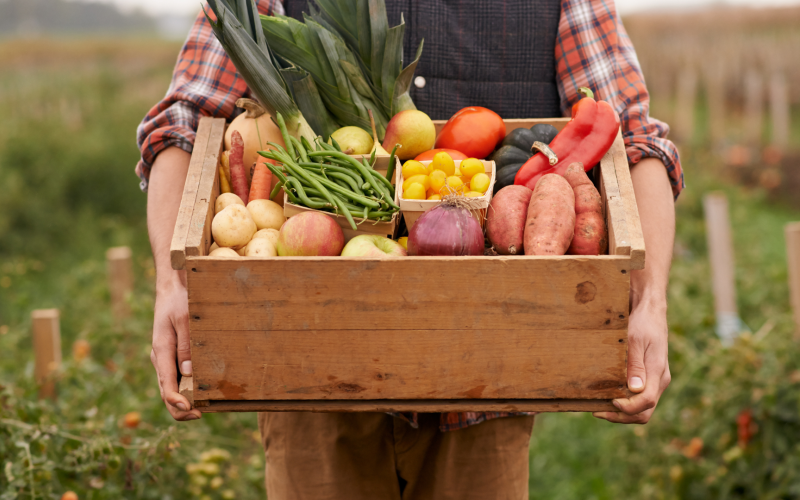Written by Lavonne Meyer (former SDSU Extension Food Safety Field Specialist).
Food drying is one of the oldest methods of preserving food for later use. Drying removes the moisture from the food so bacteria, yeast and mold cannot grow and spoil the food. Drying also slows down the action of enzymes (naturally occurring substances which cause foods to ripen), but does not inactivate them. Increasing the temperature of the food makes its moisture evaporate, and air moving over the food carries the moisture away. A balance of temperature and humidity is needed for successful drying of foods.
Safety Considerations
Contaminated produce has been known to cause foodborne illness. Like any other fresh fruit, apples can be contaminated by bacteria from soil, water, and animal sources, therefore never use fallen apples. Sanitation and good personal hygiene practices during harvest, preparation and processing right up to the point of eating is critical to providing a safe product. Contamination at home may also occur when poorly washed utensils or cutting boards are used to prepare fresh fruits. It is very important that you wash your hands with soap and water before and after preparing produce, and use clean equipment and cutting surfaces.
Apples should be washed just before eating or preserving. To wash, rub each apples under running water or use a clean scrub brush and then dry with a clean paper towel. Washing the fruit in a sink filled with water is not recommended since the standing water can spread contamination from one apple to another. The use of soap or detergent is not recommended for washing apples because the apples can absorb the detergent residues. The stem area and the blossom end of apples are the most difficult to clean. Cut around the core or use an apple coring device.
The high sugar and acid content of apples makes them safe to dry in the sun. However, ideal conditions for drying are a minimum temperature of 85° F. and humidity less than 60%. Insects and birds are attracted to drying apples, so they must be covered with cheesecloth. Indoor food dehydrators usually produce a better quality product.
Dehydration Methods
Oven
Oven drying is also possible, but it is not practical. It takes over 25 hours to dry the slices adequately and that makes the oven unavailable for other uses. You must also leave the door open and that is not a safe practice for a home with small children. The oven is not as efficient as a dehydrator and uses more energy.
Electric Dehydrator
A food dehydrator is a good choice for drying apples and can be used at any time. It is a small appliance that has an electric element for heat with a fan and vents for air circulation. Dehydrators are efficiently designed to dry foods quickly at 140° F.
To dry apples using an electric dehydrator:
- To prepare apples for drying, wash apples thoroughly. Peel the apples, if desired, core and slice into ¼” rings, wedges, or chips. Fruits sliced into uniform pieces will dry more evenly. Treat apples before drying to prevent excessive browning. The treatments also help to preserve the flavor and vitamins of the fruit.
- The simplest pre-treatment is to soak freshly cut slices for 10 minutes in a solution of one part bottled lemon juice to one part water. Do not rinse after soaking. For other pre-treatment methods such as blanching, sulfuring, or dips, refer to Preserving Food: Drying Fruits and Vegetables from the University of Georgia Cooperative Extension Service.
- Arrange the apple slices in a single layer on the drying trays. Pieces should not touch or overlap. The process will take 6 to 12 hours. It is not an exact science so you will need to test them occasionally. Food dries much faster at the end of the drying period, so watch it closely. To test for dryness, cut several pieces in half. There should be no visible moisture and you should not be able to squeeze any moisture from the fruit. The apple slice should be pliable, but not sticky or tacky.
- After drying, cool the fruit 30 to 60 minutes before packaging. If you package it too soon, warm food can lead to sweating and moisture buildup. If you wait too long to package, moisture can re-enter the food. The remaining moisture may not be distributed equally among the pieces because of their size or location in the dehydrator.
Conditioning Fruit
Conditioning is a process used to equalize the moisture remaining in the fruit and reduce the risk of mold growth. To condition the fruit, take the cooled, dried fruit and pack it loosely in glass or plastic containers. Put the lid on and let them stand for 7 – 10 days. The excess moisture will be absorbed by the drier pieces. Shake the container daily to separate the pieces. If condensation develops in the jar, return the fruit to the dehydrator for more drying. When conditioning is completed, package and store the fruit for later use.
Resources:
- Preserving Food: Drying Fruits and Vegetables, University of Georgia Cooperative Extension Service.
- Apples: Safe Methods to Store, Preserve, and Enjoy, University of California.
- Dried Apples, Penn State Extension.


